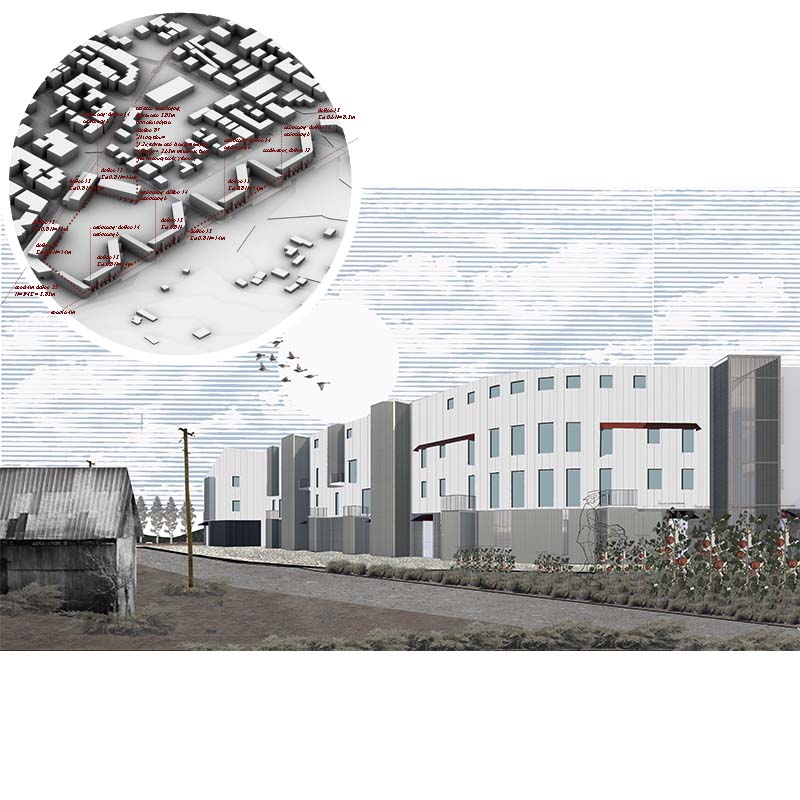

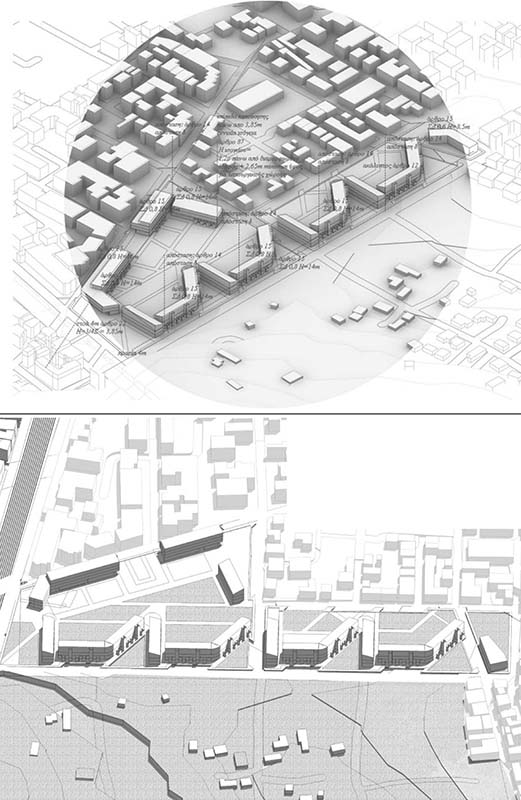

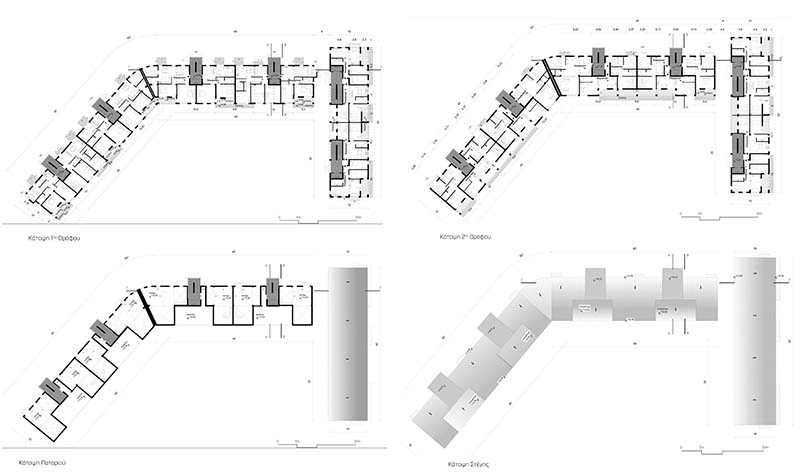



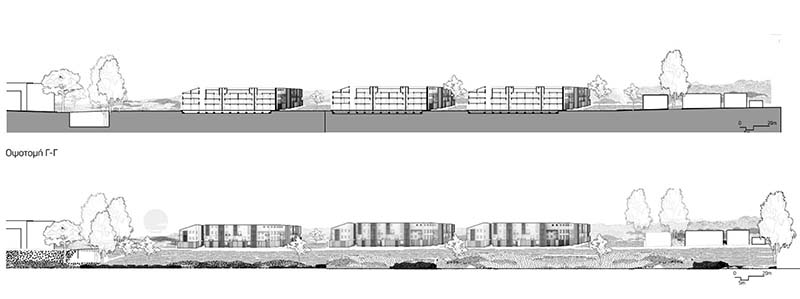



The thesis titled “Three Urban Squares: Bridging the Urban with the Rural through Building Regulations and Common Spaces” aims to explore potential ways in which urban expansion can occur within the vacant space at the city’s edges. The character of this void is semi-rural, reminiscent of the countryside, typically unorganized, lacking comprehensive planning, with cultivated areas, industries, and even residences developing within it. The only requirement is that these activities adhere to the definitions set by specialized protection terms (such as zoning regulations, etc.), and buildings comply with the construction rules defined by the urban planning code. Urban expansion should not only respond to urban planning zone regulations but also to another planning tool, the “Building Regulations,” applied uniformly throughout the Greek territory, resulting in visible uniformity and homogeneity of the urban space. The purpose of the study is to push the New Building Regulation to a critical state, as this point will indicate whether we can deviate from the beaten path of the last 12 years of its implementation. Through specific articles of the regulation concerning construction, coverage, planted open spaces, maximum heights and reference points, lateral distances, open and closed balconies, semi-outdoor spaces, and passage arcades, an attempt will be made to find new models of building arrangement, settlement, and exploitation of open land in a 4.3 ha area in the suburbs of the city of Volos. The area selected for development comes after studying the 2016 General Urban Plan of Volos and the areas proposed for residential development. Although the consensus is the redevelopment of building stock in other areas, for the sake of the study, a “tabula rasa” is necessary to examine all possible manifestations of laws on a field unaffected by the restrictions brought by the fragmentation of large areas into small land parcels. With this in mind, the final proposal includes a residential complex with communal spaces on the ground floors of the buildings at street level and a unified open space that serves the entire community as an urban garden.
Supervisor: Micocci Fabiano
Reference Number: 1054
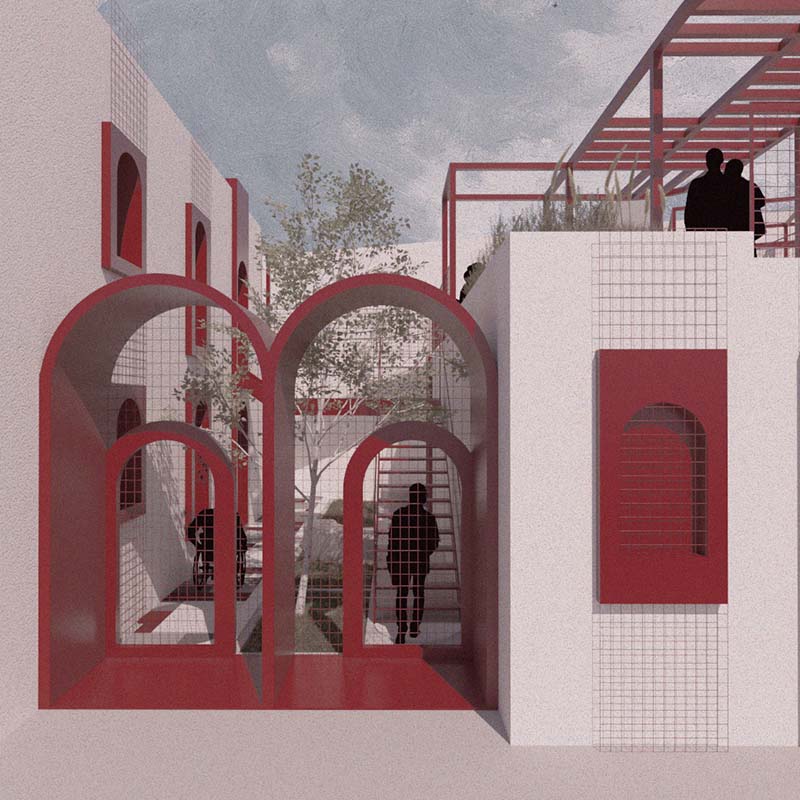

The abandonment of buildings constitutes a widely prevalent issue in urban centers worldwide and has engaged many researchers. Some define the concept of "abandoned building" as structures that pose a risk to public health and safety. In Greece, the problem of building abandonment is particularly significant and has been exacerbated in recent years due to economic recession. Although systematic studies to document the exact number of abandoned buildings have not been conducted, it is observed that this number is high. The rates of building abandonment in Greece are primarily attributed to urban sprawl, deindustrialization, and economic recession, while inheritance issues and high property taxes contribute to worsening the problem.
This thesis focuses on creating a multisensory experience through the reuse of abandoned buildings in the center of Volos, utilizing the city's existing building stock. The aim is to create a unique environment that blends mythology, architecture, and modern technology, highlighting the relationships between fantasy narrative and architectural design.
After studying a broader area, the focus is on a complex of abandoned residences. Each building is transformed into a space reflecting a different thematic inspired by myths such as Theogony, Titanomachy, Chiron and the Centaurs, the Argonaut Expedition, and the Wedding of Peleus and Thetis. Through interactive projections, augmented reality, sensors, and other technologies, textures, sounds, and scents, visitors interact with the environment, experiencing an iconic blend of contemporary vision with the magic of ancient myths.
Supervisor: Symeonidou Ioanna
Reference Number: 1069
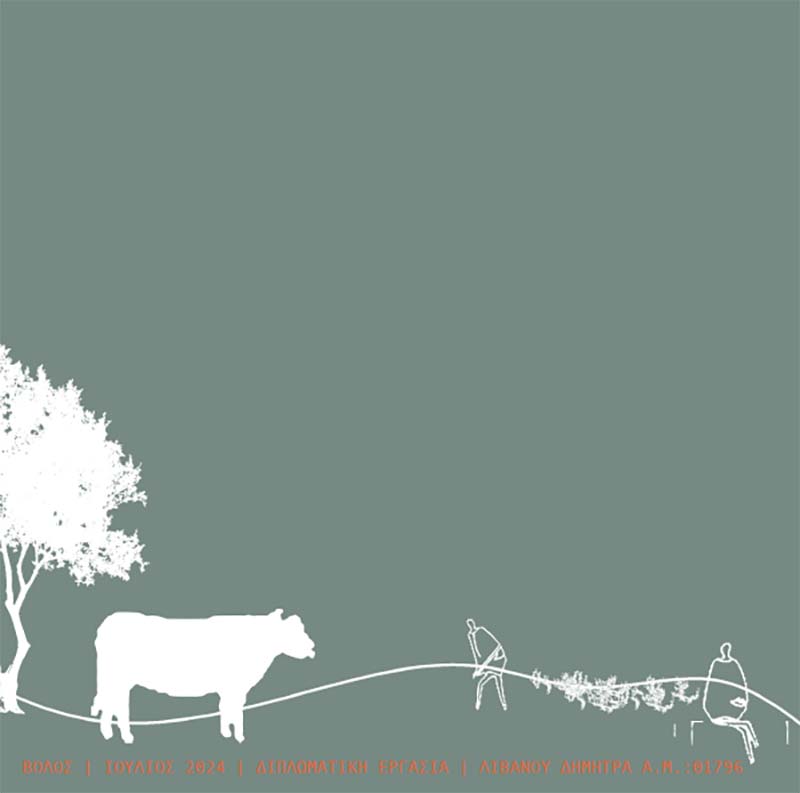

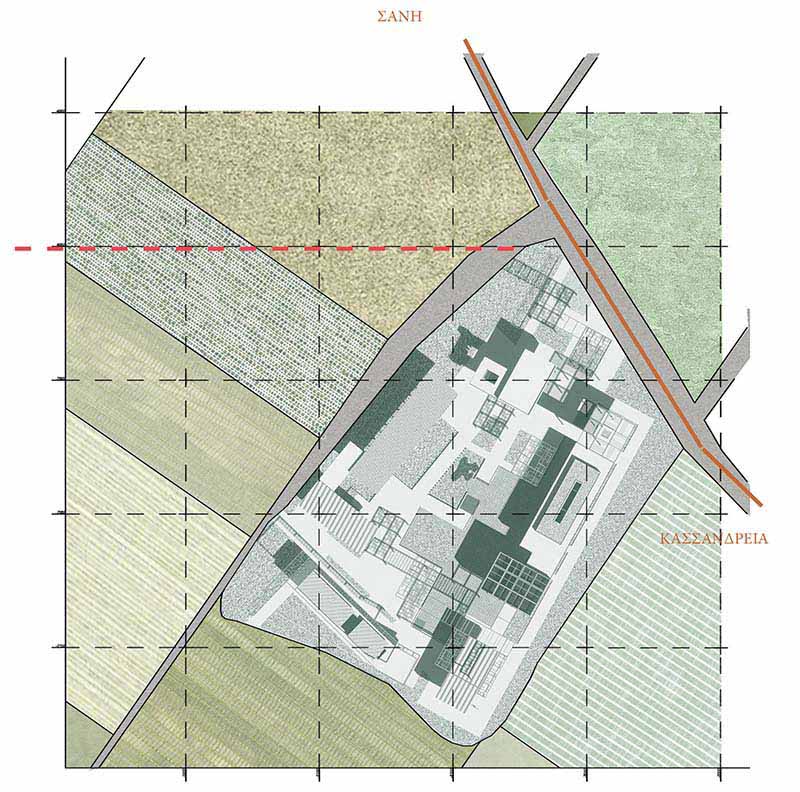

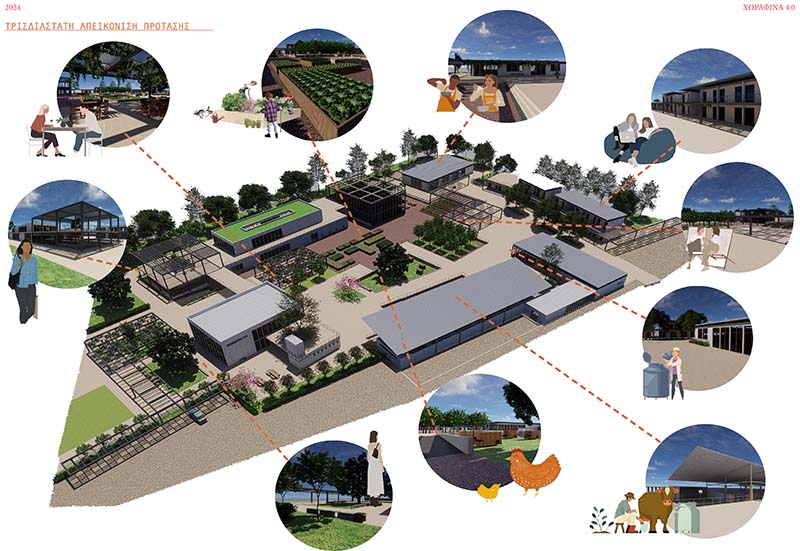

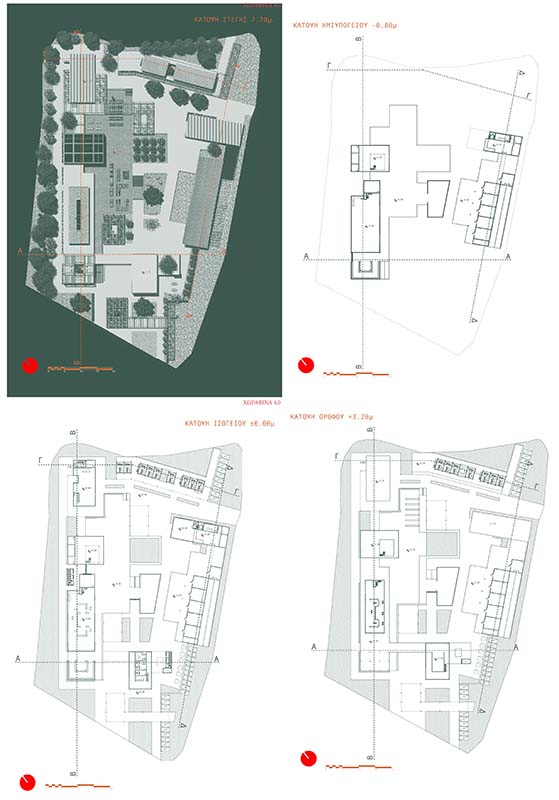

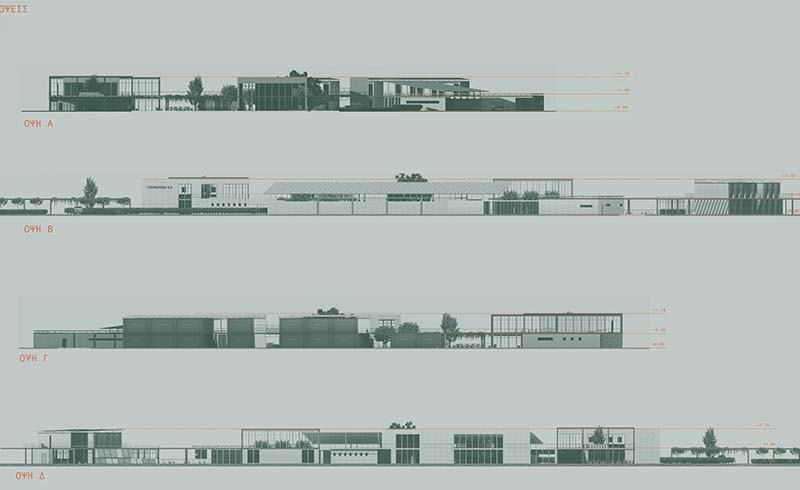

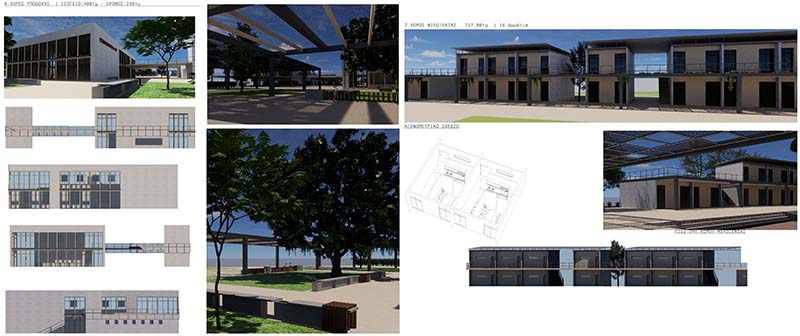

The aim of this diploma thesis project concert the design of a new agrotourism unit. More specifically, the facility in question will operate throughout the year, both from the building point of view, as well as from its cultivation program, an attempt will be made to acquaint and familiarize the visitor with the countryside of Hakkidiki, as well as with the traditional activities that take place and are the main occupation of many of its inhabitants. Through this facility, an attempt will be made to find ways in which architecture can contribute to the strengthening of the primary sector, through the ability to adapt the building program of the facility to the alternation of seasons and at different levels of traffic.
As the fourth generation and wanting our family business not to be lost over time but to continue and be upgraded, I chose to create an agro-tourism unit in the old stable of my grandfather, Livanos Dimitrios, adding more functions. The agro-tourism unit is developed in three zones organized around the perimeter of the plot, in the first zone centered on the organization, in the second zone the living and in the third zone the hospitality. In the first zone, the functions of the market, the nursery as well as the workshop of traditional products and processing were placed , in the second zone the stable facilities and the cheese products workshop and finally in the third zone the creation of sixteen apartments. The zones are placed in such a way that, initially, they have separate and independent entrances and exits, but also to protect the atrium created where it has always been and is now a meeting and relaxation area. Small separate squares have been created in the atrium or in the inner courtyard, as well as there the outer space of the nursery extends, creating the feeling of a large and fragrant garden.
Supervisor: Stylidis Iordanis
Reference Number: 1064
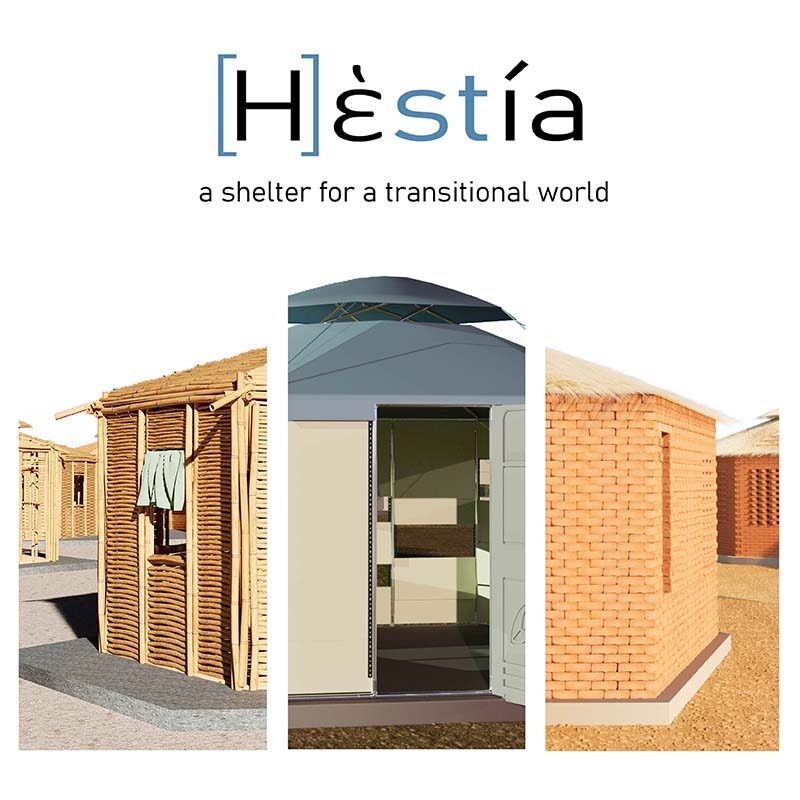

The spatial planning process for refugee settlements and shelters in the Sahel region of Africa is carried out strictly by international organizations. The latter, recognizing the urgent need for housing and meeting the basic survival needs of the refugees, proceed with temporary planning "solutions", the data and quantitative and qualitative indicators of which put their methodology in jeopardy. At the same time, an ever-increasing number of refugees are displaced from their countries, with the result that there is an immense need to optimize the planning of settlements and shelters. Therefore, this paper presents a triple dimension of both the existing situation (theoretical framework) in terms of numbers and capacity of refugee flows (quantitative indicators to cover respective needs) and spatial intervention tools (at different scales).
More specifically, the first section deals with the analysis of existing policies to mitigate refugee flows and "improve" the living conditions of refugee camps and shelters. This theoretical framework is important on the one hand because it presents the current image of planning of international organizations (and local synergies) and on the other hand it puts the added value of the subsequent thesis into perspective. The second section is invasive by design. Therefore, the shelters (in the first year) and the housing complexes that structure them (in the second) are analyzed in the form of simulations in terms of their environmental conditions (e.g. thermal comfort). The climatic conditions of the study area are an a priori important issue to consider and therefore enter into the design. Finally, and after the analysis of the existing situation has been carried out, the third section proceeds to specific design proposals. Thus, the shelter is redesigned with the optimization of living conditions in mind and is captured both as a self-contained unit and as an extension of a residential complex.
Key-words: Al-Sahel, shelter, settlement, refugees, [H]estia, thermal comfort
Supervisor: Psychogyios Dimitris
Reference Number: 1084

